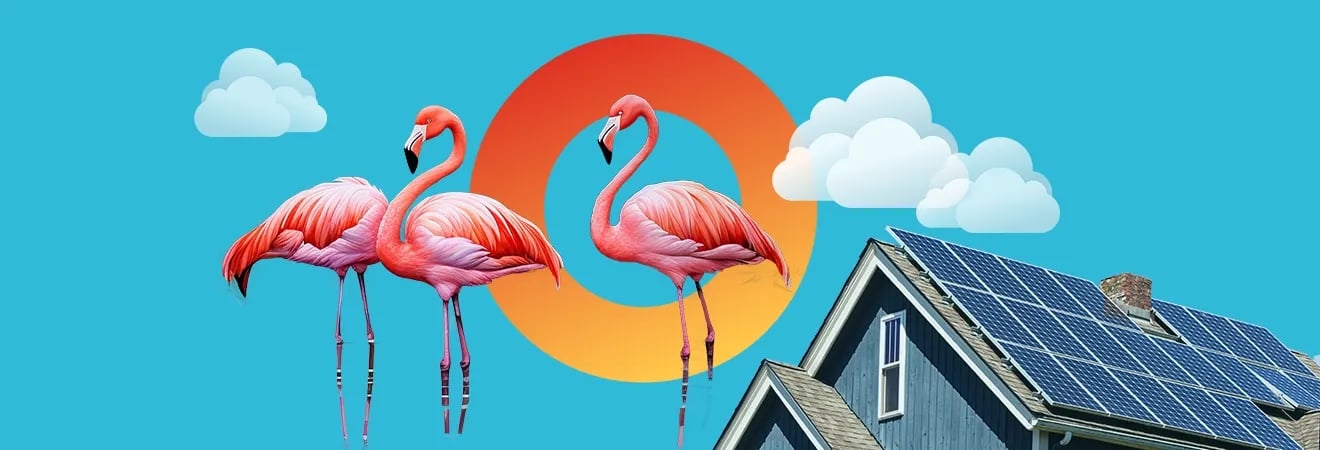Guide On How Solar Tracking System Is Revolutionizing The Solar Industry
Riddhi Kumar • 2024-09-09 • 6min read
One of the major limitations of traditional solar panels is their fixed position, which results in a decrease in efficiency and productivity throughout the day. To overcome this limitation, the solar tracking system has been introduced. In this article let's explore reasons why solar system owners should consider integrating solar tracking systems into their systems and how it can enhance overall energy performance.

The use of solar energy has been gaining popularity in recent years, as more and more people are becoming aware of the benefits it offers. However, one of the major limitations of traditional solar panels is their fixed position, which results in a decrease in efficiency and productivity throughout the day.
To overcome this limitation, the solar tracking system has been introduced. In this article let's explore reasons why solar system owners should consider integrating solar tracking systems into their systems and how it can enhance overall energy performance.
Understanding Solar Tracking Systems
A solar tracking system allows solar panels to move and adjust their position throughout the day in order to optimize sunlight exposure. This improves the overall efficiency of the solar panel system by increasing the amount of energy it can generate.
Solar tracking systems use sensors, motors, and controllers to track and follow the movement of the sun across the sky.
Types of Solar Tracking Systems
There are two types of Solar Tracking Systems: A single-Axis Tracker and a Dual-Axis Tracker. So, let's explore what they are!
Single-Axis Tracking System
Single-axis sun tracking system rotate on one axis, typically aligning panels east to west. This design allows the panels to follow the sun's movement across the sky, maximizing sunlight exposure during peak hours.
The simplicity and reliability of a single-axis solar tracking system contributed to its widespread adoption. This type of solar tracking system is easier to install and maintain, making it a popular choice for large-scale solar farms.
They can boost energy production by approximately 25-35% compared to fixed systems.
Dual-Axis Tracking System
Dual-axis solar trackers move on two axes, allowing for adjustments in both horizontal and vertical directions. While dual-axis trackers are more expensive due to their complexity and advanced features, the benefits often outweigh the initial investment.
The ability of a dual-axis solar tracker to maximize solar radiation capture can lead to greater returns on investment and reduced payback periods for solar projects.
These systems can increase solar energy capture by up to 40%, making them particularly advantageous in regions with high solar potential and variable weather conditions.
Benefits of Solar Tracking Systems
Solar tracking systems provide a wide variety of benefits, such as -
Increased Energy Efficiency
The most significant advantage of solar tracking systems is the substantial boost in energy efficiency. The primary advantage of solar tracking systems is their ability to produce more energy than stationary solar panels.
By increasing the angle of incidence, trackers enable panels to capture more sunlight, resulting in higher energy yields. This is particularly beneficial during peak hours when the sun's intensity is at its highest.
Cost-Effectiveness
Solar tracking systems can also lead to significant cost savings in the long run. While the initial investment may be higher, the increased energy efficiency and production of solar tracking systems can result in lower electricity bills and reduced payback periods for solar projects.
Moreover, with advancements in technology, the costs of solar tracking systems have significantly decreased over time, making them a more feasible option for solar installations.
Environmental Impact
Solar tracking systems contribute to a greener planet by allowing for the production of more renewable energy with less land usage. As a renewable energy source, solar power has minimal environmental impact compared to fossil fuels.
But by further maximizing solar energy production through tracking systems, you can reduce your reliance on non-renewable sources and decrease carbon emissions.
Grids and Energy Storage Solutions
The higher outputs from solar tracking systems can reduce the reliance on fossil fuels and contribute to a more stable energy grid. By generating more electricity, solar tracking systems can help meet peak demand periods, reducing strain on traditional power grids.
Coupled with energy storage solutions, these systems can provide consistent power even during low sunlight hours.

Challenges and Considerations for Solar Tracking Systems
Although solar tracking systems are a boon for the solar energy industry, they are not free from challenges. Before you get a solar tracking system, explore its challenges and considerations!
Initial Investment and Maintenance Costs
The cost of purchasing and installing solar tracking systems can be a barrier for some users, particularly in regions with less sunlight.
Maintenance might also be more complex than a fixed solar energy system due to its moving parts. However, this cost can often be offset by increased energy production and efficiency over time.
Weather and Environmental Conditions
Solar tracking systems are highly sensitive to weather and environmental conditions. High winds, heavy rain, and extreme temperatures can affect their performance and require additional maintenance.
Moreover, solar tracking systems may not be as effective in areas with high cloud cover or frequent shading from nearby structures.
Control System Reliability
The control systems of solar tracking systems are critical in ensuring their optimal performance. Any malfunctions or errors in the control system can significantly impact the energy production and efficiency of the system.
Additionally, as with any technology, there is always a risk of malfunction or failure over time, requiring regular maintenance and potential replacements.
Is Solar Tracking System Right For You?
Ultimately, the decision to invest in a solar tracking system depends on various factors, such as your location, budget, and energy needs. While they can offer significantly higher energy production and efficiency, it's essential to consider the initial cost and maintenance requirements.
A solar tracker system offers significant advantages for maximizing the efficiency and performance of solar panels, as demonstrated by the following points:
- A solar tracker system optimizes solar panel efficiency.
- It adjusts the solar panels' position to follow the sun's path.
- Maximizes energy capture throughout the day.
- Ideal for areas with vast open spaces and high solar irradiance.
- Enhances solar panel performance and investment returns.
So if you have the budget and location suitable for a solar tracking system, it can be an excellent investment for long-term energy production and efficiency.
Conclusion
Solar tracking systems undeniably revolutionize the solar power industry by significantly enhancing energy production and efficiency. As technological advancements continue and the demand for renewable energy surges, these systems will play an increasingly pivotal role in solar energy generation.
By embracing solar tracking, we can harness the sun’s power more effectively than ever, paving the way for a sustainable energy future.